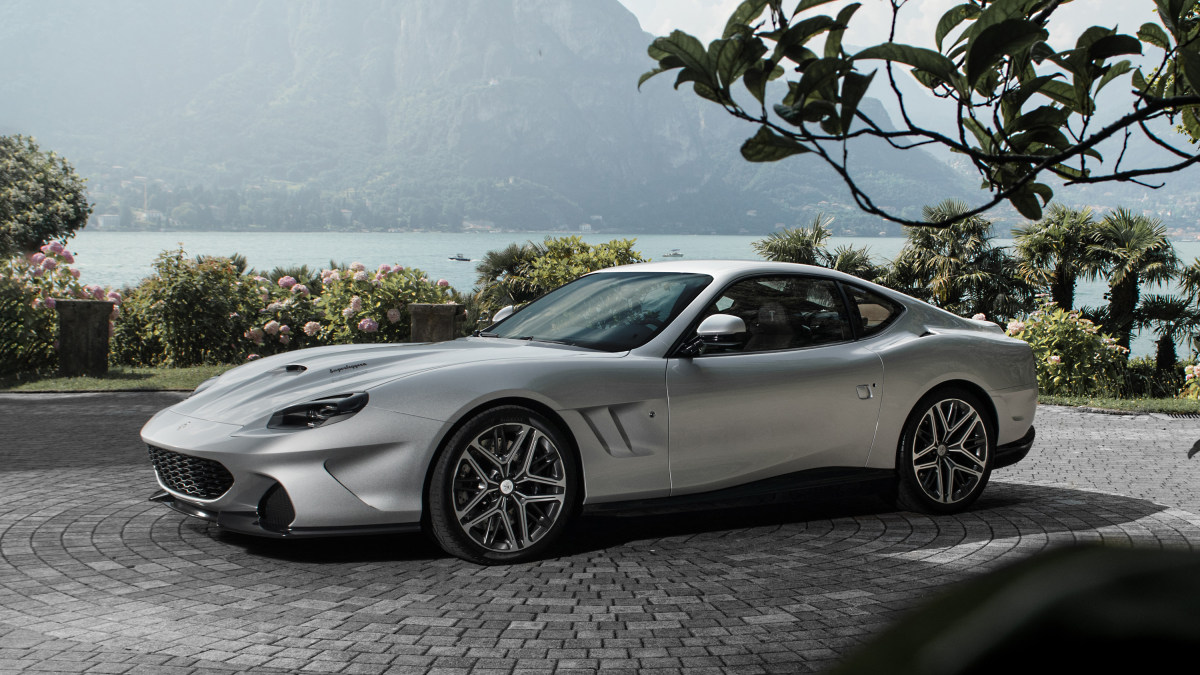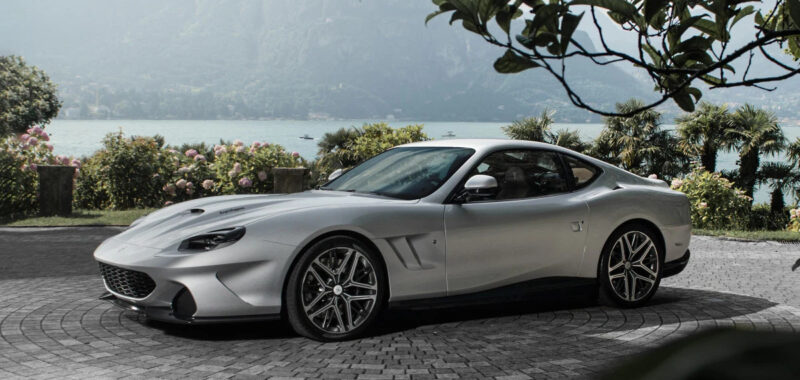
As automotive design houses continue combing through the back catalog of automobilia for old gems to polish, we’ve been waiting for the Ferrari 550 Maranello to get its coachbuilt due. Milan’s Touring Superleggera is the first to make it happen, as far as we know, with the Veloce12 — that’s correct, no space in Veloce12, just like Ferrari’s new 12Cilindri. Everyone’s familiar with the run-of-show by now: a donor car enters the Touring workshop for a strip search including body cavities, followed by a full workup. The rebuild begins, as usual, with additional stiffening in key points, Touring saying that it examined every load-bearing component with finite element analysis to determine how much buttressing to place, and where. Torsional stiffness is said to target that of the F12 (which also had a full name with no spacing, the F12berlinetta), the 550’s successor two generations away, the 599 in between.
The bodywork adds a more curve to the 550’s lines in a similar way that Callum reworked the silhouette of the 355 by Evoluto. The front bears most of the additional sculpting, Touring turning the lower front intakes from demure apertures into larger channels for sweeping air around the front wheels. New, multi-element LED headlights flank a grille that’s wider and taller than the original. Behind, the reworked hood scoop stands out more and bears the wordmark of the style house. The larger forms of the carbon fiber bodywork swell from front to back, the fenders arcing over the front wheels, a bevel worked into the doors, and the shoulder line dipping at the greenhouse to rise again over the rear fenders.
The 550 was always potent. Given the right preparation for racing, several teams won races on three continents with the 550, won class championships on two, took a class victory at the 2004 24 Hours of Le Mans, and came second in the GTS Class of the American Le Mans Series in 2003. As a daily driver, Evo named the 550 the the Greatest Driverʼs Car of the past decade in 2004, calling it “an all-time Ferrari great” and writing, “Thereʼs never been a supercar thatʼs so exploitable and so rounded in its abilities.
This might help explain why Touring Superleggera’s engineering department only breathed on the 5.5-liter V12. After a complete teardown, examination, and rebuild with new components and a beefier cooling system, final output comes to 503 horsepower and 419 pound-feet of torque. That’s just 25 horses more than the original, and the same torque, hence the sprint to 62 miles per hour listed in the same 4.4 seconds as the original 550. There’s a bigger upgrade to the sound, Touring bolting on a freer-flowing Supersprint Exhaust.
The Italians worked with U.K. suspension company Tractive — familiar from the Kalmar 9X9 — on a multi-axis G-force sensor to control a set of active dampers. This was despite the fact Tractive doesn’t sell retail products for any Ferrari. Touring went back to Italy for brakes, a Brembo system hides behind custom wheels, with six-pot calipers on 15-inch discs in front, four-pot calipers on 15-inch discs in back.
All we’re told about the inside is that it contains “ergonomically sculpted seats” and “precision-machined controls.” The pictures lead us to believe the leather’s sumptuous enough to make a cow jealous.
Ferrari only made a few more than 3,700 examples of the 550 Maranello from 1996 to 2001. Touring says it’s ready to convert only 30 of them into the Veloce12, in left- or right-hand drive. Each costs €690,000 ($761,120 U.S.) plus the price of the donor car and taxes. Deliveries will begin around the middle of next year.

